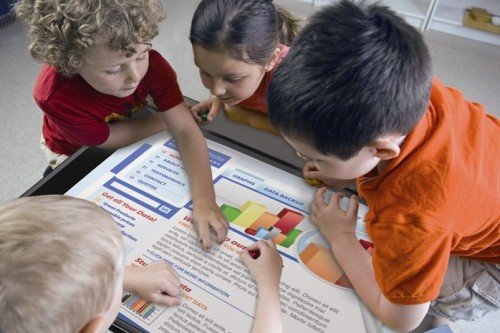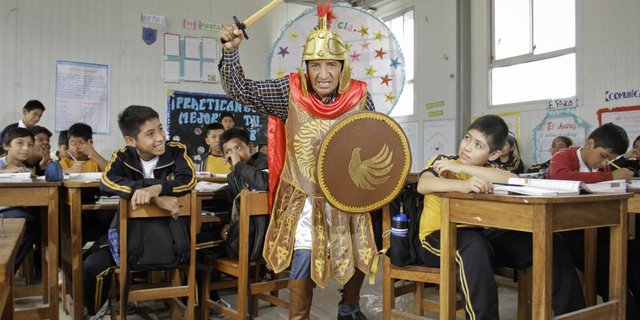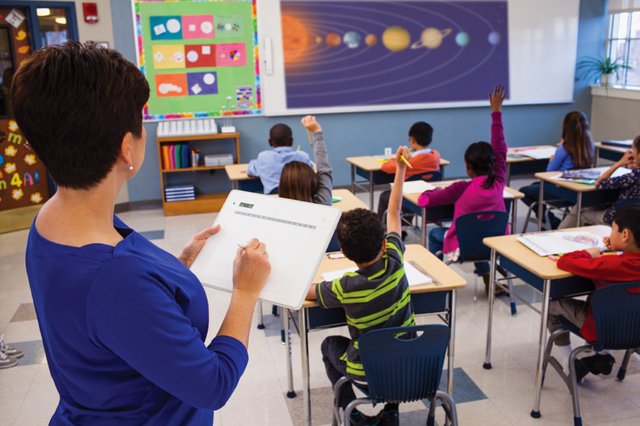TEACHER ROOM: Project Based Learning # 4
In this publication we will see a bit about the Methodological Strategies and the Evaluationin the Curriculum Project. Establishing the method of work and evaluation, is to trace the path by which the goal is to be achieved. Therein lies its importance: no matter how desirable and perfect the purpose is, if there is no way to travel and that, in addition, allows us to reach the goal, we will never reach it.

Source
Establishing a work method means tracing the path by which the objective will be achieved.
Methodological strategies
The establishment of a methodology and adequate resources in relation to the objectives to be achieved will facilitate or not achieve them.
In addition, given that the objectives are formulated in terms of capacities, their achievement will be possible through the practice of certain methodological principles and not others, since solidarity, respect for others, etc., are not achieved through the study of a lesson or learning to remember the concepts, but daily practicing the skills and habits that are required of the students.
The methodology becomes, therefore, a fundamental part of the curriculum, especially in everything related to the achievement of objectives that involve the mastery of procedures and attitudes.
It is basic, therefore, to agree on methodological principles and the use of common didactic resources for all areas, although then, in each of them, they are specifically specified according to their epistemological and procedural requirements. There are certain objectives that must be achieved through work in all curricular areas; otherwise, they will not be achieved.The common and basic methodological decisions have a definitive impact on the coherent and harmonious education of the students: the teachers must assume these principles and adapt them, subsequently, to the demands of their area. On the other hand, it will be convenient that this methodology is made as concrete as possible, within the generality to which it refers.
It is necessary to achieve common methodological principles for all areas with the aim of achieving a harmonious education.It is not enough to say that an active and participatory methodology will be followed, without further ado, because the particular interpretations of each teacher will lead to ignoring what is really done in each classroom.
You can specify a little more, referring to the grouping of students, the use of spaces, the type of activities that will be carried out: individual, group, research, understanding, production, globalization, co-evaluation, etc.

Teacher dresses up to teach
Methodological strategies in the PCE
-Common but concrete guidelines for all curricular areas or subjects, respecting the specific application required by each of them.
- Types of activities.
- Criteria for the grouping of students.
- Criteria for the selection and organization of resources.

Source
The current curricular approach, based on constructive psychology, implies placing special emphasis on the activity carried out by the student and in the process that follows to achieve the development of certain abilities. This brings with it the need to carry out a model of continuous and formative evaluation, instead of final; and summative, as has been done.
Although the summative evaluation must ensure that the evaluated product responds to the characteristics of the system, the formative evaluation must guarantee that the models of that system are adequate to the characteristics of those involved in the evaluated process.
The regulatory function of each evaluation is shown here in the opposite direction: in the first case, it is the person who must adjust to the system and, secondly, it is the system in which the person must adapt. These basic aspects of the evaluation, specified in techniques and appropriate instruments for its application, must be decided and reflected in the Curriculum Project, since they must be respected by the entire group of teachers and known by the students and their parents. This will affect, in this way, how to evaluate the learning in each area or subject in particular.

Source
It is important to emphasize the importance of including the evaluation of teaching processes and teaching practice, and not only of learning. Its foundation lies in the fact that the greater or lesser performance of the students and, consequently, of the educational system, depends not only on what they do, but will be conditioned by the teacher's performance, the general organization of the center and the teaching processes and learning (methodology, evaluation, use of resources, coherence among the teaching staff, participation of the school, etc.)

Source
- Learning Evaluation
- Common mode for all areas: definition, determination of techniques, instruments, agents, report, communications.
- Teacher evaluation
- Processing and criteria to evaluate teaching processes and teaching practice.
- Evaluation of the Curricular Project.
- Internal evaluation of the center.
Previous publication:
TEACHER ROOM: Project based Learning # 1 , 2 , 3




Posted from my blog with SteemPress : http://deisip67.vornix.blog/2018/08/07/teacher-room-project-based-learning-4/


If you would like to support the educational community by delegating to @steemiteducation, please click on any of the following links. This will ensure that more teachers are supported on a daily basis.
100SP 200SP 300SP 400SP 500SP 750SP 1000SP 2000SP 3000SP 4000SP 5000SP 10,000SP 25,000SP